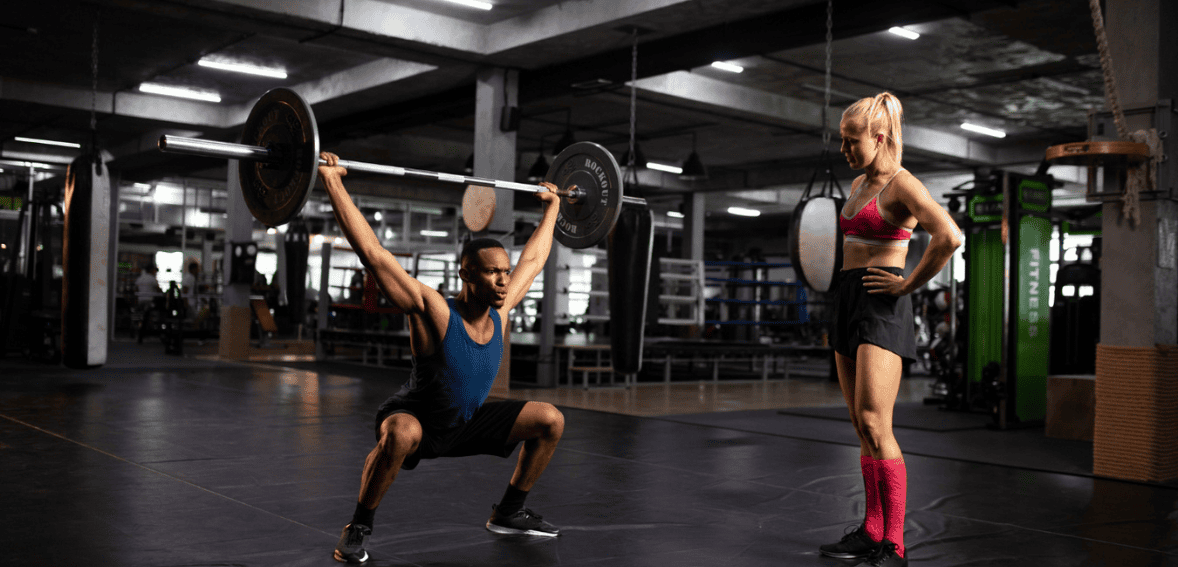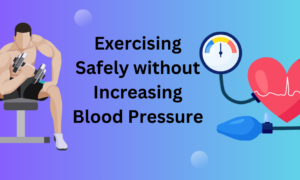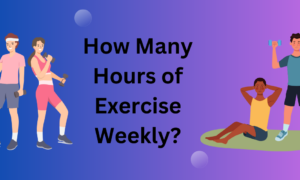Many people start their fitness journey with determination and clear goals but eventually encounter roadblocks that limit their progress. The reason this happens is not always lack of effort or motivation but the common fitness mistakes to avoid that slowly build into long term problems. When someone begins training for endurance, strength, or aesthetics, they often assume that working harder is always the solution. In reality, training errors are more about misunderstanding how the body adapts, grows, and responds to different types of exercise.
Someone training for endurance might copy a strength program from the internet and feel disappointed that it is not helping their stamina. Another person focused on muscle gaining may read about long distance running and think it helps them lose fat fast but may not realize that it is slowing their muscle building process.
The biggest misunderstanding is assuming one type of workout fits every goal. Endurance strength aesthetic fixes are different based on the goal you want to achieve. The body requires specific kinds of stimulus for specific kinds of adaptation. Without recognizing this, someone can spend months on a routine but see no changes. The good news is that these mistakes are entirely avoidable once you understand how the body changes and what each goal requires. Fixing training errors starts with awareness, not intensity. You do not need to work out more, you just need to work out smarter.
Mistake 1: Not Matching Your Training Style With Your Goal
One of the most common fitness mistakes to avoid is training in ways that do not match your objective. Someone training for strength might do endless cardio sessions thinking it will help them feel fitter but then wonder why their muscle size is not increasing. In another example, a person training for aesthetics can follow a powerlifting style program because it looks cool online but does not understand that it will not necessarily shape their physique the way they want.
Training errors are usually not a lack of effort but a mismatch between methods and outcomes. Your exercise should tell your body exactly what to adapt to. For strength gains, you need heavy loads and increased mechanical tension. For endurance strength aesthetic fixes, the key is using the right rep ranges, volume, and rest periods.
Fixing this mistake requires learning how to align your training style with your results. If you want endurance, you must engage in consistent long duration efforts. If you want strength, you have to progressively overload muscles in a planned structure. If you want aesthetic changes, your training requires a different balance of volume and intensity. This understanding keeps your training focused and removes the frustration of doing everything yet getting nothing. You do not need random workouts. You need targeted ones.
Mistake 2: Ignoring Progressive Overload and Hoping Consistency Alone Works
Many people believe that showing up regularly is all it takes to transform their body. While consistency is vital, it does not replace progressive overload. This is one of the most overlooked fitness mistakes to avoid. The idea of progressive overload is simple. You need to gradually increase the load, reps, or volume for your muscles to change. Without forceful adaptation, the body stays the same because it has no reason to grow stronger or last longer. Training errors often come from repeating the same routine without pushing a little bit harder each week. The body adapts quickly and once something becomes easy, it stops working.
Fixing this requires challenging yourself in a structured way. You do not have to lift extremely heavy weights immediately. Even small increases in intensity create long term results. Over time, you learn that endurance strength aesthetic fixes do not happen by accident. The body needs pressure to change but it needs the right kind of pressure. When you apply the principle of progressive overload correctly, every workout becomes productive and purposeful. You do not waste energy doing things that no longer bring results. You simply move forward step by step.
Mistake 3: Switching Routines Too Often and Confusing the Body
It is common to lose patience when results do not show fast enough. As a result, many people switch routines every few weeks thinking they need something new. This is one of the most common training errors because the body needs time to adapt to a program. Constantly changing exercises, styles, and rep schemes prevents any real progress. People who chase new trends often stay stuck in the same place. Consistency with a single direction is far more effective than chasing variety. Variety is useful, but only when it supports a clear goal.
To fix this, you need to commit to a structured plan for at least eight to twelve weeks. This gives the body enough time to adapt and improve. If you want endurance strength aesthetic fixes, you cannot jump from muscle building to fat loss and back to strength every few days. It confuses the body. When you stick with a plan long enough to master it, the body transforms. The solution is patience. Trust the process and allow the training to work before replacing it with something else.
Mistake 4: Forgetting That Nutrition Supports Every Training Goal
Exercise alone cannot give you your ideal body. Strength, endurance, and aesthetic goals are all supported by nutrition. Many people underestimate this and assume that working harder means they can ignore what they consume. One of the most common fitness mistakes to avoid is thinking the body can transform without proper fuel. Strength requires more protein, endurance requires more energy and recovery, and aesthetics require a balance of calories and macronutrients. Without the right nutrients, your body cannot repair itself or grow. Training errors happen when people starve themselves for aesthetics or overeat for energy without a plan.
Fixing this mistake involves tailoring your nutrition to your training. For strength, focus on protein and recovery. For endurance, maintain fuel and hydration. For aesthetic improvements, track calorie intake to ensure you are meeting your goals. Nutrition is not separate from training. It is a part of the process and enhances your progress in every direction. Endurance strength aesthetic fixes are faster when you fuel the body correctly.
Mistake 5: Overtraining and Not Allowing the Body to Rest Properly
Many people think more training equals more progress. This leads to overtraining, an extremely common mistake in fitness. The body needs recovery time to adapt and grow. Every workout creates stress and muscle breakdown. The changes happen during rest. Overtraining causes fatigue, injury, and loss of motivation. One of the most ignored fitness mistakes to avoid is pushing the body beyond its limits without giving it time to repair. Training errors like this can actually reverse progress and lead to burnout.
The solution is rest and recovery. Your program needs days for sleep, stretching, and lower intensity work. Strength gains come from recovery. Endurance improves when the body repairs itself. Aesthetic changes require recovery for muscle growth and definition. You are not losing progress by resting. You are building strength and preparing for the next performance. Once this is understood, training becomes safer and more effective.
Mistake 6: Copying Someone Else’s Training Instead of Personalizing Your Own
People often copy famous athletes or influencers thinking that if the workout works for them, it should work for everyone. This is one of the biggest training errors. Each body has different genetics, flexibility, strength levels, endurance capacity, and lifestyle conditions. A program that builds muscle for one person may do nothing for someone else if their needs are different. The best endurance strength aesthetic fixes come from personalized routines. Not from copying what looks impressive on social media.
Fixing this mistake requires paying attention to your own progress, not someone else’s. You need a program that fits your skill level and your goals. Personalizing your training is one of the most important fitness mistakes to avoid when you want lasting progress. Listen to your body and adjust based on how it responds.
Mistake 7: Not Tracking Your Progress or Measuring Results
Progress only happens when you measure it. Training errors often come from not understanding whether something is working. If you want to improve endurance, strength, or aesthetics, you need to track performance. This means recording weights, reps, distance, or time. Without tracking, you cannot fix problems or celebrate improvements. The most effective endurance strength aesthetic fixes happen when you know where you are and where you need to go.
Fixing this is simple. Record your workouts and compare results weekly. Tracking allows you to adjust routines and identify weaknesses. It gives you confidence and direction. Progress becomes clear when it is measured.

Mistake 8: Thinking That Strength, Endurance, and Aesthetics Are Separate Worlds
Many people think they must choose one goal only. They do not realize that strength supports endurance. Endurance supports aesthetics. Aesthetics support strength. The body is connected and each training goal improves the others in different ways. One of the most overlooked fitness mistakes to avoid is thinking you must choose only one path. The truth is, you need a balance. Strength builds muscles that improve endurance. Endurance gives stamina that helps strength. Aesthetics are a result of both.
Fixing this mistake is about balance. Build a program that allows you to grow in a complete way. Endurance strength aesthetic fixes are easier when you understand that all goals support each other.
Mistake 9: Relying Only on Gym Workouts and Ignoring Functional Movement
A lot of people think fitness is built only inside the gym. They assume real progress is measured only by how much weight they lift or how long they run on the treadmill. This creates one of the most overlooked fitness mistakes to avoid. Training errors happen when people forget that the body performs in the real world, not just under controlled exercise conditions. Functional movements like climbing, jumping, stretching, changing direction, and carrying loads help build coordination, stability, and injury resistance. These movements improve endurance strength aesthetic fixes because they challenge multiple muscles together and train the body to move naturally.
When someone trains only machines or isolated exercises, they can get stronger in one direction but weaker in another. Their posture may not improve, their joints may not stabilize properly, and they may struggle with movement patterns that do not match everyday life. The fix is incorporating exercises that build balanced strength and mobility. Functional movement teaches the body to work as a system. This not only enhances results but makes exercise safer and more useful. When you combine functional work with goal specific training, you build overall fitness that supports every other part of your routine.
Mistake 10: Treating Warmups and Cooldowns as Optional Steps
Warmups and cooldowns are often the first thing people skip when they are short on time. This leads to unnecessary stress on muscles and one of the most damaging training errors. The body needs preparation before exertion and recovery after intensity. Warmups help improve circulation, activate muscles, and prepare joints for movement. Cooldowns help reduce tension, improve flexibility, and speed up recovery. Ignoring these steps leads to stiffness, soreness, and higher injury risk. One of the best endurance strength aesthetic fixes is actually slowing down before and after training. Warmups should not feel like a chore. They are the first step toward performance.
Cooldowns help maintain long term health and keep the workout benefits going. When warmups and cooldowns are personalized for your training style, your performance increases. You become more flexible, more mobile, and more injury resistant. This is one of the most important fitness mistakes to avoid because it protects your body and enhances results. With a proper warmup and cooldown system, every workout becomes smoother and more efficient, and your training becomes sustainable rather than something that wears you down.
Mistake 11: Believing Motivation Will Stay High Forever
Motivation comes and goes. Many beginners start strong but lose momentum when the excitement fades. This creates one of the most common fitness mistakes to avoid. People rely only on motivation instead of developing habits and systems. Training errors appear when someone stops exercising the moment they feel tired or busy. The truth is that long term results come from routine, not emotion. Endurance strength aesthetic fixes require consistency even on days you do not feel like working out. The fix is building discipline through small habits. Set a schedule. Make workouts predictable. Remove excuses. Motivation is helpful, but it is not permanent.
You need a process that keeps you moving forward. When you stop relying only on motivation and start focusing on routine and discipline, your progress becomes steady and reliable. This is how you reach your fitness goals even on bad days. Training becomes a lifestyle rather than a temporary phase. When motivation comes back, it becomes a bonus instead of your main source of drive.
Mistake 12: Expecting Perfection Instead of Progress
Many people quit because they think one missed workout or one bad week ruins their progress. This mindset creates unnecessary stress and one of the most harmful training errors. The goal of fitness is not perfection but progress. Even athletes, trainers, and professionals have setbacks. What matters is getting back on track quickly. Fitness mistakes to avoid include being too rigid or judging yourself too harshly. The body does not require perfection. It needs consistency and effort over time. Endurance strength aesthetic fixes come from months of small improvements.
You get stronger one workout at a time, not all at once. Perfection is unrealistic. Progress is sustainable. The fix is shifting your mindset. Celebrate small wins. Recognize your improvements. Accept slow progress as normal. When you stop trying to be perfect, you enjoy the process more and stay committed longer. Training becomes fun again and results feel more natural. Fitness is a journey and the more patient you become, the more successful you are.
Conclusion
All training errors have simple solutions. The key is knowing how to avoid the common fitness mistakes to avoid and adjusting your exercise based on your goal. Progress does not come from guessing or copying others but from following structured habits and focusing on the right methods. With awareness, nutrition, patience, progressive overload, and balanced routines, your body will transform in the direction you want.





















